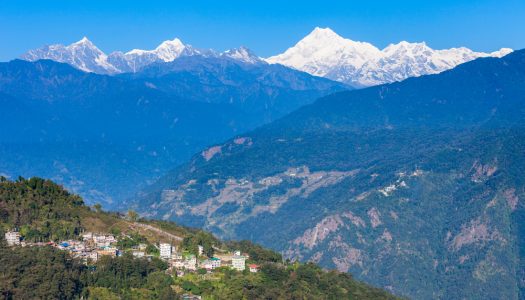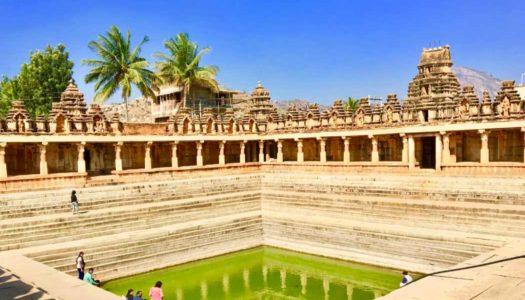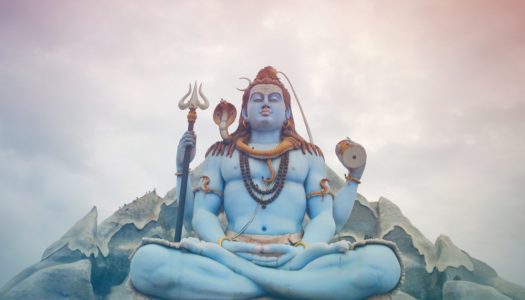Textiles in India are known all across the globe since ancient times, with their roots dating back to the 5th millennium B.C. during the Indus Valley civilisation. The cotton they used was spun at home and utilised by these people to weave their garments, and indigo was added to dye their fabric. Textiles have always been a representative of India’s culture and power in trade and commerce, with traces of Indian textiles found in Rome, China, and Egypt.
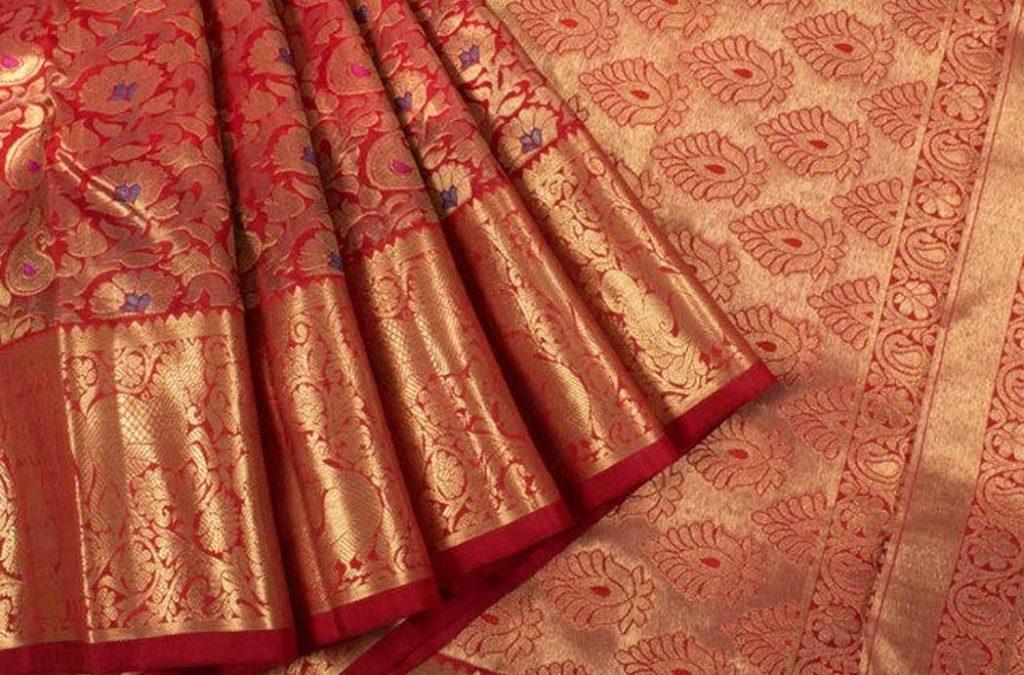
Even today, India continues to be a hub for textiles, with thousands of people producing beautifully woven fabrics that captivate the eye. Here are a few examples of India’s fabrics, prints, and embroidery. It is common for people to travel across most states in India in search of their desired traditional clothing, fabric, and embroidery. If you’re also tempted by the vibrant colours and delicate handwork, consider taking a trip across the country solely to enjoy the richness of its culture and garments.
10 Best Textiles In India
1. Banarasi Silk
Banarasi silk fabric is a luxurious and exquisite variant of silk hailing from the ancient city of Varanasi in Uttar Pradesh, which is famous for creating the best textiles in India. The roots of this silk are firmly embedded in India’s rich history and have become a world-renowned fabric, especially when woven into a saree known as the Banarasi silk saree, adorned by all Indian women alike. The garment was originally crafted for the elite and royalty and was woven with threads of pure gold and silver, requiring over a year to create.
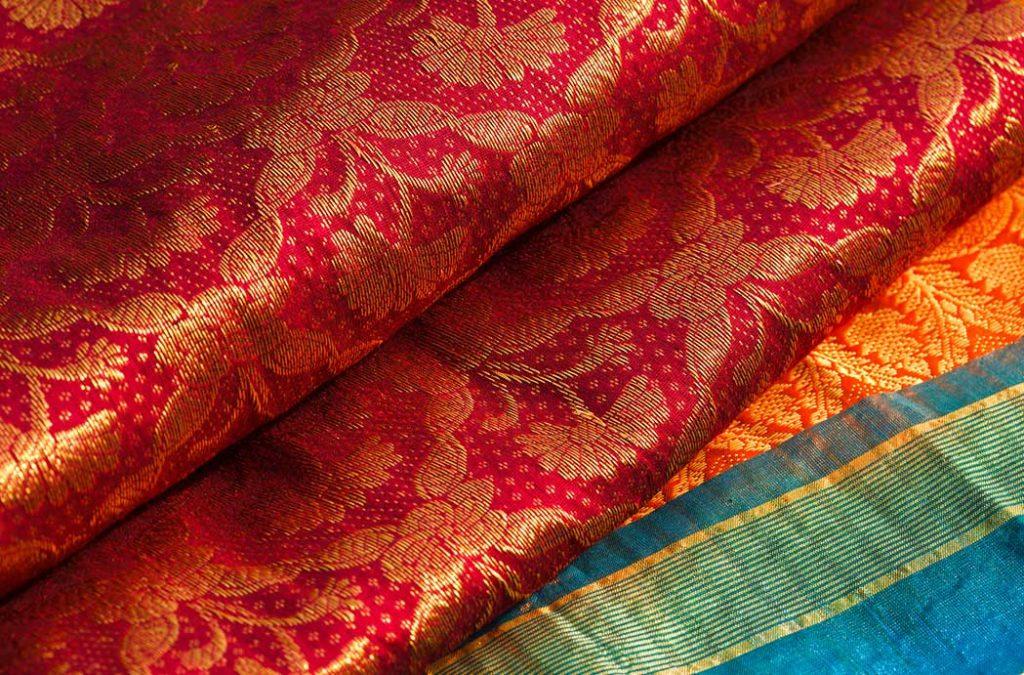
This fabric is a true representation of magnificent artistry and craftsmanship, which is the result of centuries of perfecting the craft. This art was introduced to Indians by the Mughals in an effort to elevate crafting and weaving to new heights under their widespread empire. Prior to their arrival, Banarasi sarees were imported from China, but the Mughals influenced numerous artisans to hone their skills and delve into intricate art, and the locals were inspired to start weaving in India, seamlessly blending Persian motifs with Indian attires. So, if you ever plan a trip to Banaras, shop at one of the traditional stores around our Treebo Hotels and select the best saree for you and your loved ones.
2. Chanderi
Chanderi fabric is a gem in the world of textiles in India, and it is widely popular for the intricate and exquisite motifs that adorn its surface. In the past, these motifs were mainly inspired by nature, with designs of flowers, fruits, peacocks, and celestial bodies taking centre stage all over the cloth. However, in today’s day and age, geometric and abstract forms have also found their way onto Chanderi fabric, which adds a contemporary twist to this traditional fabric. Chanderi’s unique feature lies in the way these motifs are handwoven onto the fabric using various needles, each stitch creating a stunning design with detailed and extraordinary patterns.
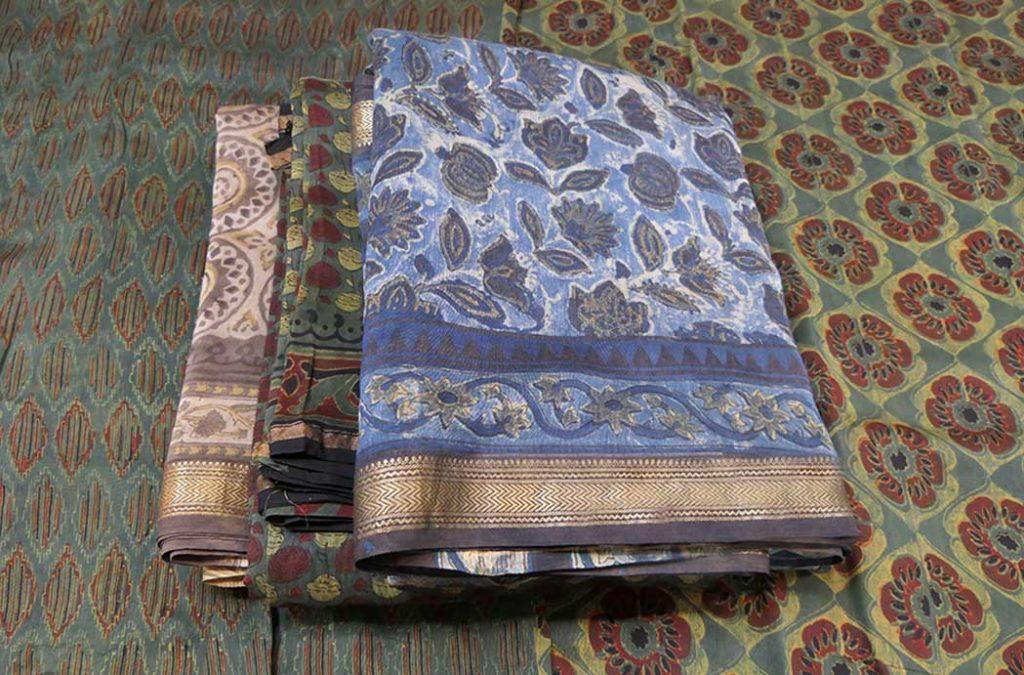
The threads used by the artisans for the motifs come in a range of colours, that include gold, silver, and copper, imbuing each design with an air of sophistication and elegance. The vibrancy of Chanderi fabric is another aspect that sets it apart, and the availability of this fabric in glorious pastel shades adds a sense of freshness and liveliness to any outfit, which makes it an ideal choice for summer wear. So if you’re looking to add a touch of timeless elegance and contemporary charm to your party wardrobe, Chanderi fabric is the best you will find.
3. Bandhani
Bandhani is a form of tie-dye textile that is adorned with intricate figurative designs formed by plucking the cloth with fingernails into tiny bindings, which is one of the most authentic and unique techniques used in the earlier days. The term ‘Bandhani’ finds its roots in the Sanskrit verb ‘bandh,’ which means to tie or bind. Today, the art of Bandhani is predominantly practised in Gujarat, Rajasthan, Sindh, Punjab, and Tamil Nadu, where it is known as Sungudi. The origins of Bandhani can be traced back to the Indus Valley Civilization, where dyeing was a common practice as early as 4000 B.C.
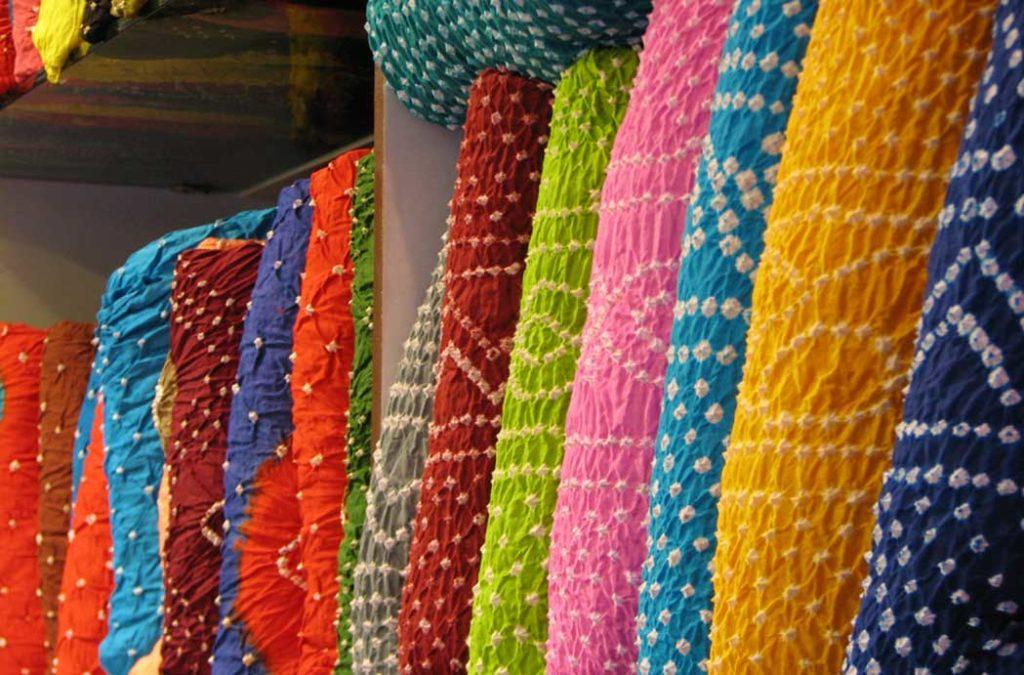
The earliest known examples of Bandhani, featuring the iconic dot design, can be seen in the paintings of the life of Buddha found on the walls of Cave 1 at Ajanta dating back to the 6th century. Bandhani is also referred to as Bandhej, Bandhni, Piliya, and Chungidi in various regional dialects. This traditional textile art form continues to captivate people with its intricate designs and vibrant colours, making it a must-have for any textile enthusiast’s collection.
Things to do in jodhpur: explore the blue city of Rajasthan
4. Kanjeevaram Silk
Kanjeevaram silk sarees are steeped in rich Hindu mythology, dating back to the time when the Gods themselves wore clothes woven by the great Markanda. Originating from the small town of Kanchipuram in Tamil Nadu, this exquisite weave has a remarkable history of over 400 years. According to legend, the two central weaving communities, the Devangas and the Saligars, migrated from Andhra Pradesh and settled in Kanchipuram.
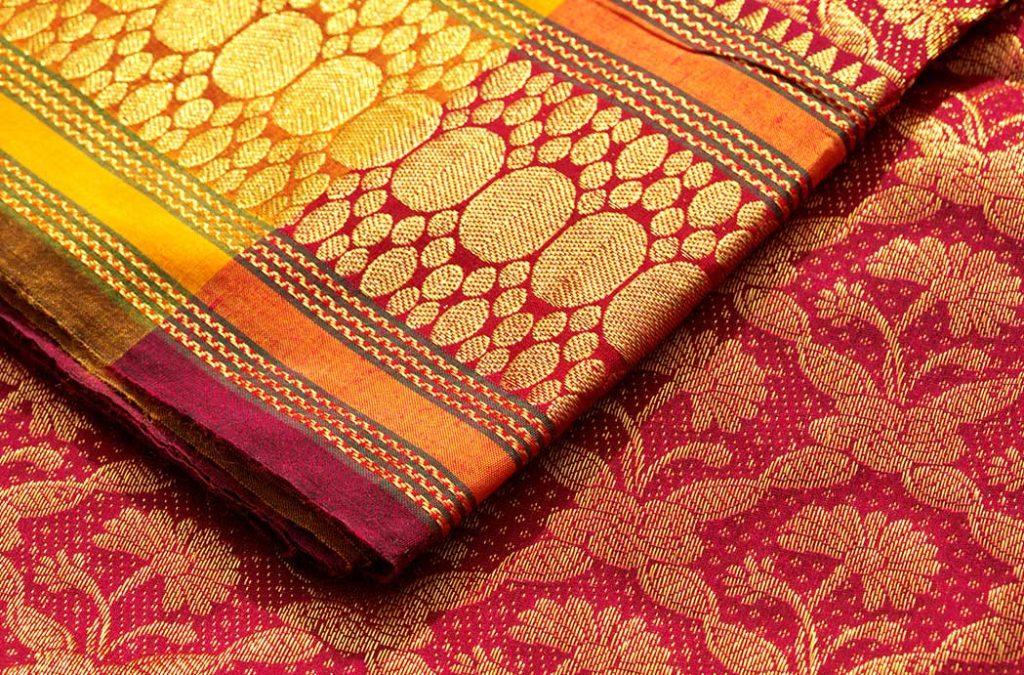
They utilised their weaving prowess to create spellbinding Kanjeevaram silk sarees inspired by the figures they saw on the temple walls in the village. These stunning sarees quickly gained popularity and became a must-have for saree aficionados. Today, Kanjeevaram silk sarees continue to be handwoven with precision and care, preserving the legacy of this ancient art. Visit Tamil Nadu and shop for the purest Kanjeevaram saree; you’ll be able to find plenty of shops and market around any of our Treebo Hotels.
5. Patola
A Patola silk saree is a rich and complex saree that is crafted using a double ikat weaving technique that hails from the Patan region in Gujarat and is renowned as one of the best traditional textiles of India. This luxurious textile is created using silk threads that are hand-dyed with natural colours and meticulously woven together to form intricate patterns and designs.
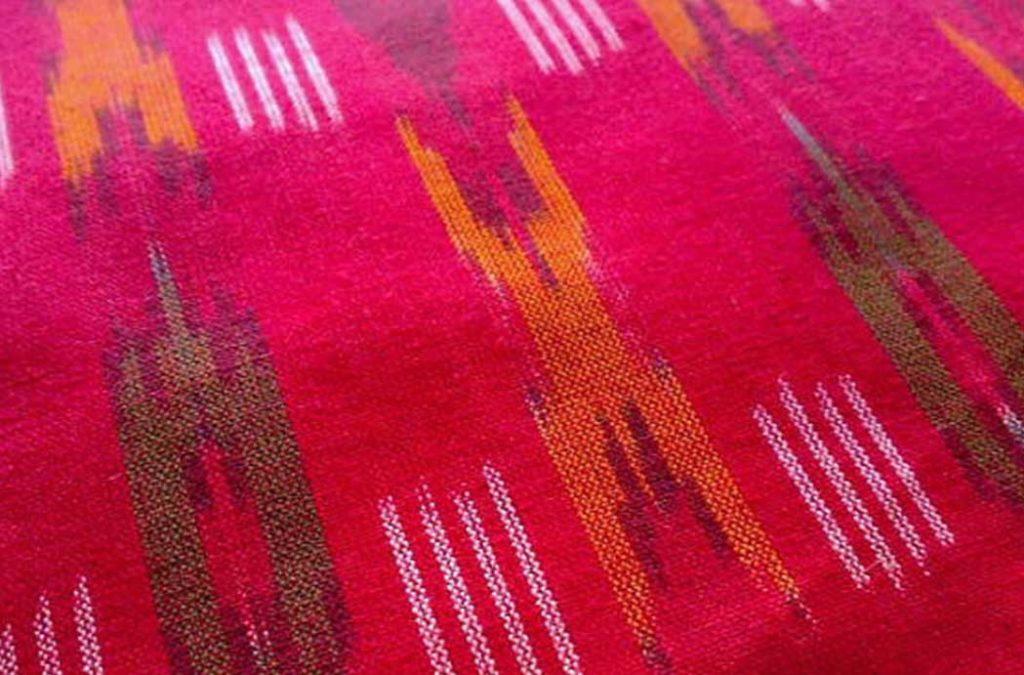
The Patola silk saree is highly coveted by saree enthusiasts around the world for its bright and vivacious hues, daring geometric motifs, and intricate detailing, which make it an absolute showstopper. Typically reserved for special occasions such as weddings and formal events, these sarees are a dazzling testament to India’s heritage and artistic mastery. Wearing a Patola silk saree is a way to celebrate and cherish the exceptional weaving traditions of India. Plan a staycation in our Treebo Hotels in Gujarat and try out these sarees for yourself to feel the true essence of the vibrant traditional state.
6. Phulkari
Phulkari embroidery is distinguished by its exquisite patterns created using long and short darn stitches, making it one of the most sought handlooms of India. Unlike modern embroidery, the craft of Phulkari did not rely on pattern books, and the embroidery was worked entirely from the reverse side of the fabric. Techniques and patterns were passed down orally from one generation to the next, with each regional group known for its unique style of embroidery.
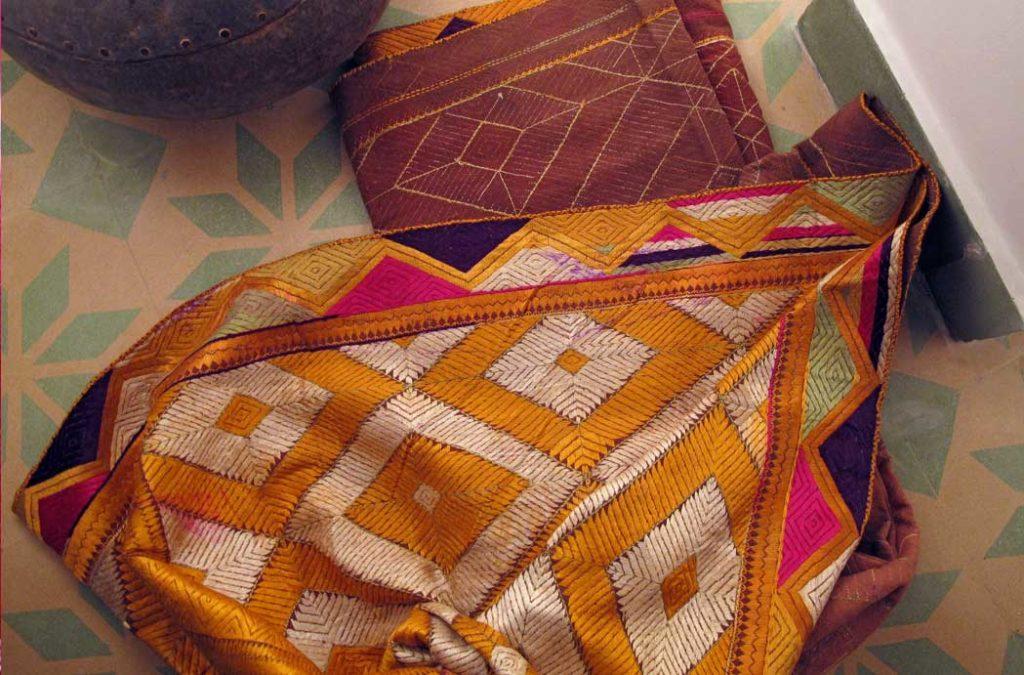
The silk thread used for the embroidery is known as past, which is a soft, untwisted silk floss. The thread was sourced from different regions like Kashmir, Afghanistan, and Bengal and then dyed in the big cities by the lalaris (a person who dyes clothes). The finest silk came from China, and village women obtained the thread from hawkers or peddlers who went from village to village selling daily essentials. Phulkari embroidery is a timeless art form that showcases the skill and creativity of artisans in India.
Also check out amazing Indian souvenirs for your memorabilia
7. Ikat
Ikat is another traditional textile of India that is made through a resist-dyeing process. This technique involves using various methods to make specific parts of the fabric “resist” dyeing. Although “ikat” is produced in many regions of the world, the Malay term for the pattern has gained popularity in the international fashion industry.
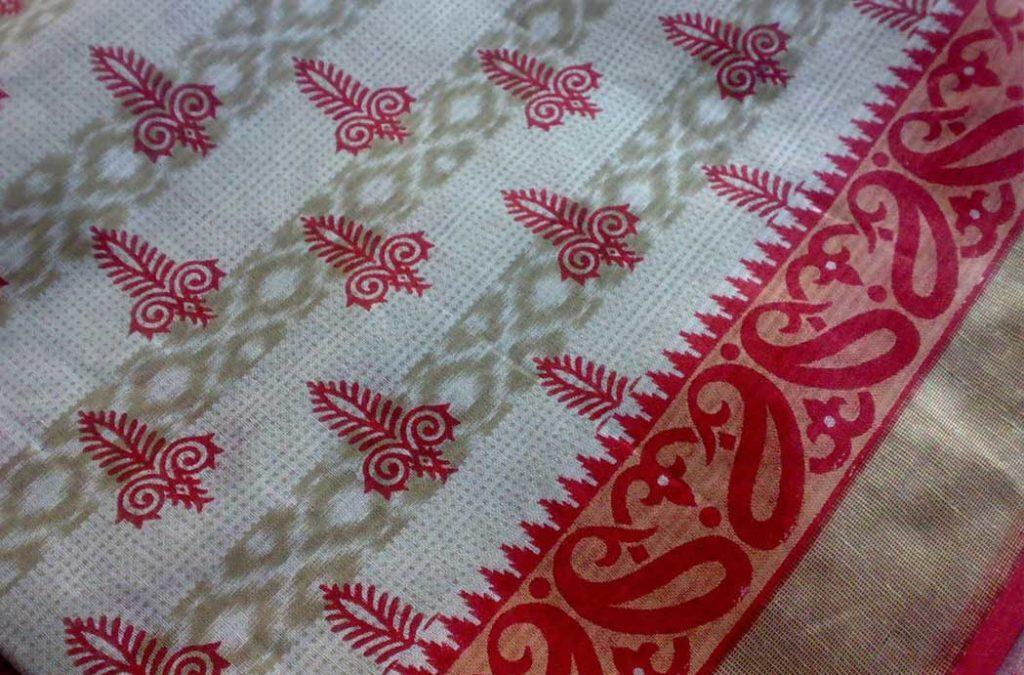
The origins of ikat fabric can be traced back to ancient times when people realised that they could create intricate and stunning garments by binding yarn together in specific patterns and dyeing it in groups. The exact origin of the ikat fabric remains uncertain, but it has become a cultural symbol of many civilisations in East Asia, Southeast Asia, the Middle East, and Europe. Today, ikat fabric remains popular among fashion designers and textile enthusiasts alike, admired for its unique beauty and rich cultural heritage.
8. Ajrak
Ajrak, a form of block printing, is one of the unique textiles in India found primarily in Sindh, Pakistan, and Ajrakhpur, Kutch district, India. These stunning shawls feature intricate designs and patterns created using stamps and block printing techniques. Throughout the years, Ajrak has come to symbolise the rich culture and traditions of the Sindhi people.
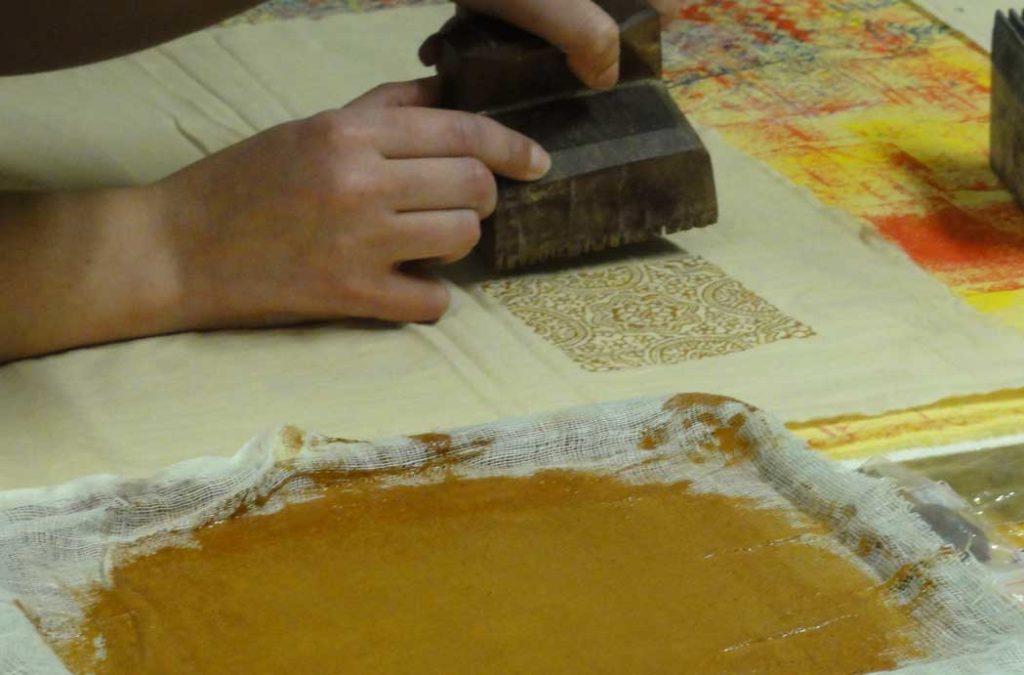
The influence of the Indus Valley civilisation in Sindh has led to the popularity of Ajrak print in neighbouring regions of India, particularly in the state of Gujarat. In South Punjab of Pakistan, a version of the Ajrak shawl known as Sajarak has emerged, predominantly featuring a cyan hue, while the traditional Ajrak design is characterised by shades of red and black. Ajrak is a testament to the beauty and artistry of the textile traditions of South Asia.
9. Maheshwari
Maheshwari fabric is a blend of silk and cotton, woven with zari in a variety of designs, such as floral patterns, stripes, and checks. It was created by the talented people of Maheshwar town (Indore, Madhya Pradesh), who were experts in weaving in India, and they used to make Maheshwari sarees with it. However, now it is also used to design a range of other clothes, such as kurta, dupatta, etc. The history of Maheshwari silk dates back to the 18th century when Queen Ahilyabai Holkar was in power in Maheshwar.
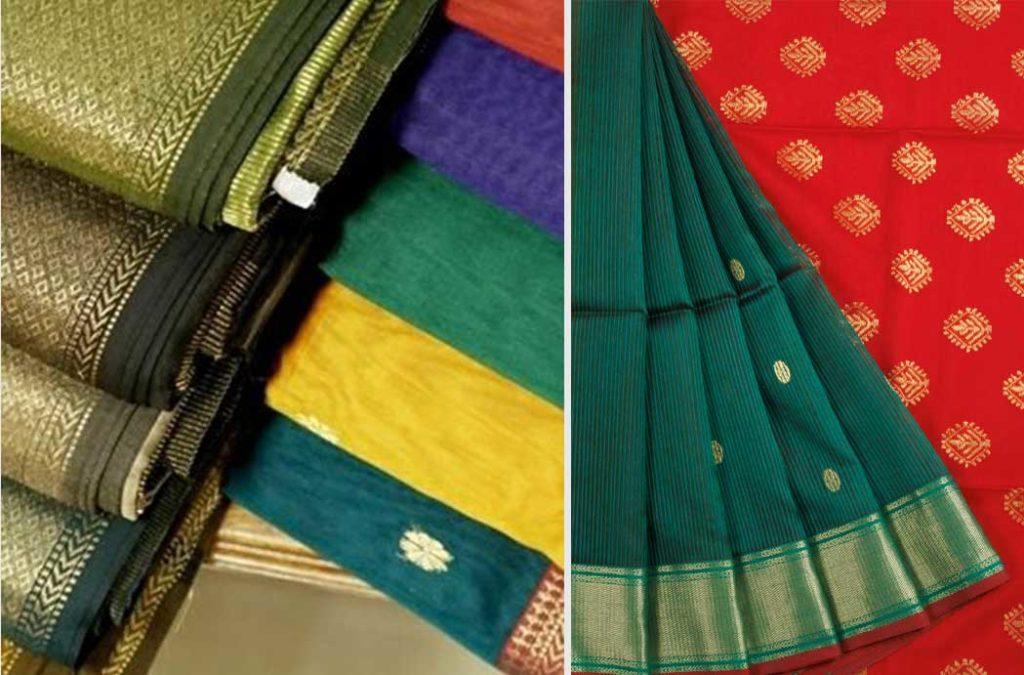
Legend has it that the queen ordered artisans from Surat and Malwa to create a 9-yard saree as a gift for her relatives and guests. It is said that the design of the first saree was done by the queen herself. Later, these sarees became known as Maheshwari Silk Sarees and were originally worn by ladies from royal families. Today, these sarees are known to be one of the most beautiful textiles in India.
5 luxury trains in India to experience a royal journey with a spectacular view
10. Leheriya
Leheriya is a captivating style of tie-dyeing that originated in Rajasthan, a hub that produces some of the best traditional textiles in India. This traditional technique creates unique patterns on brightly coloured fabric that feature a distinctive wave-like design. The name “Leheriya” comes from the Rajasthani word for wave, which perfectly captures the intricate ripple effect that this dyeing method creates.
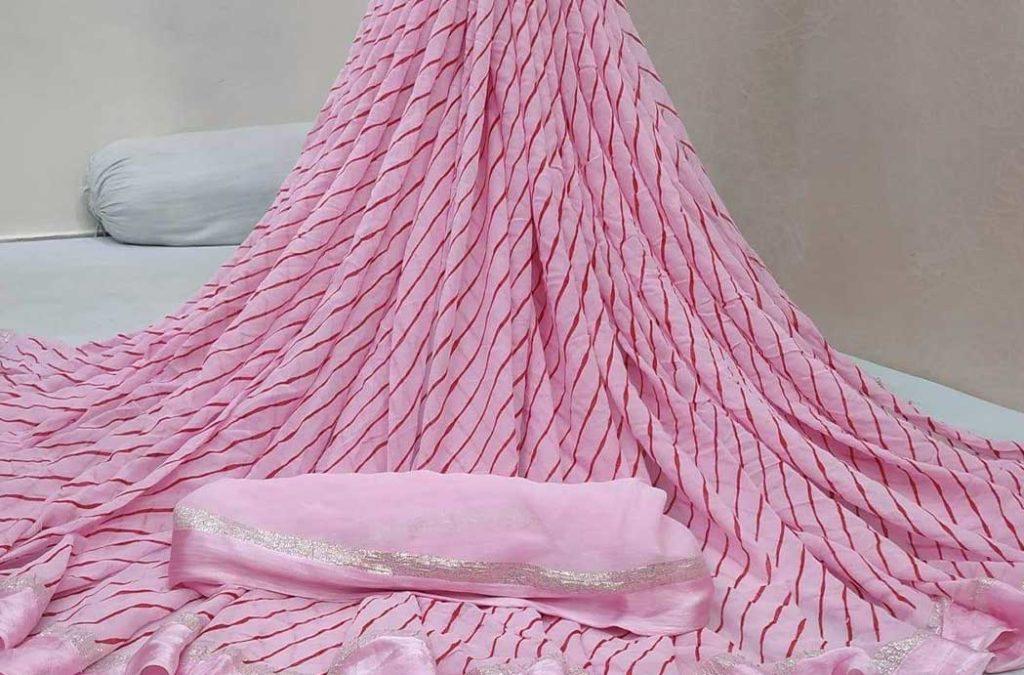
Leheriya is achieved through a process of colour-resist dyeing, which results in wavy, diagonal stripes that give the fabric a mesmerising appearance. The combination of vibrant hues and the natural, undulating patterns that characterise Leheriya make it a beloved and highly sought-after textile art form. Whether worn as a saree, dupatta, or scarf, Leheriya fabric adds a touch of dazzling, eye-catching style to any outfit. Embody the spirit of Rajasthan by cladding yourself in Leheriya-style clothing, waltz through its bustling markets, and wind up in our Treebo Hotel after a long day of exploration.
So, make your trip across India worthwhile and shop for some of the best fabrics that you’ll ever encounter. Textiles in India, specifically the traditional ones, have survived the test of time and have remained relevant even during the contemporary revolution in fashion. Moreover, it’s inspiring modern clothing brands. You can create a customised indo-western outfit for yourself or rock the traditional look as you explore the world and flaunt the beauty of our culture.
















